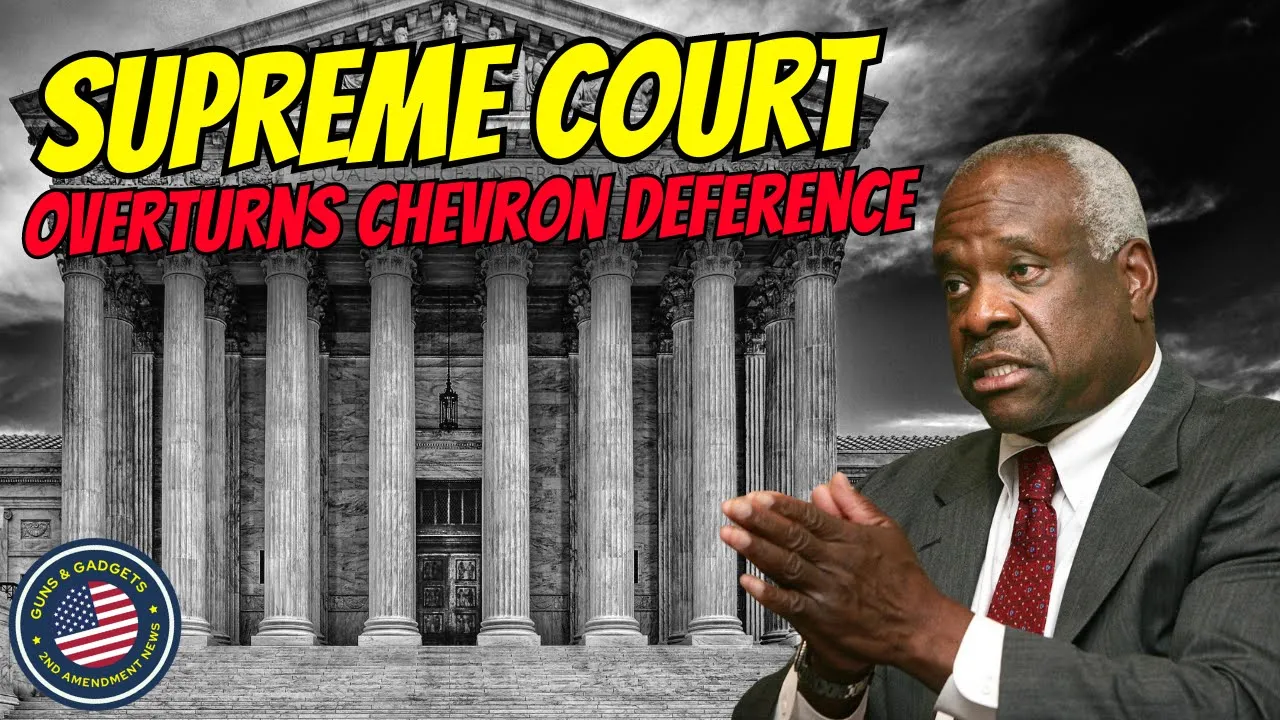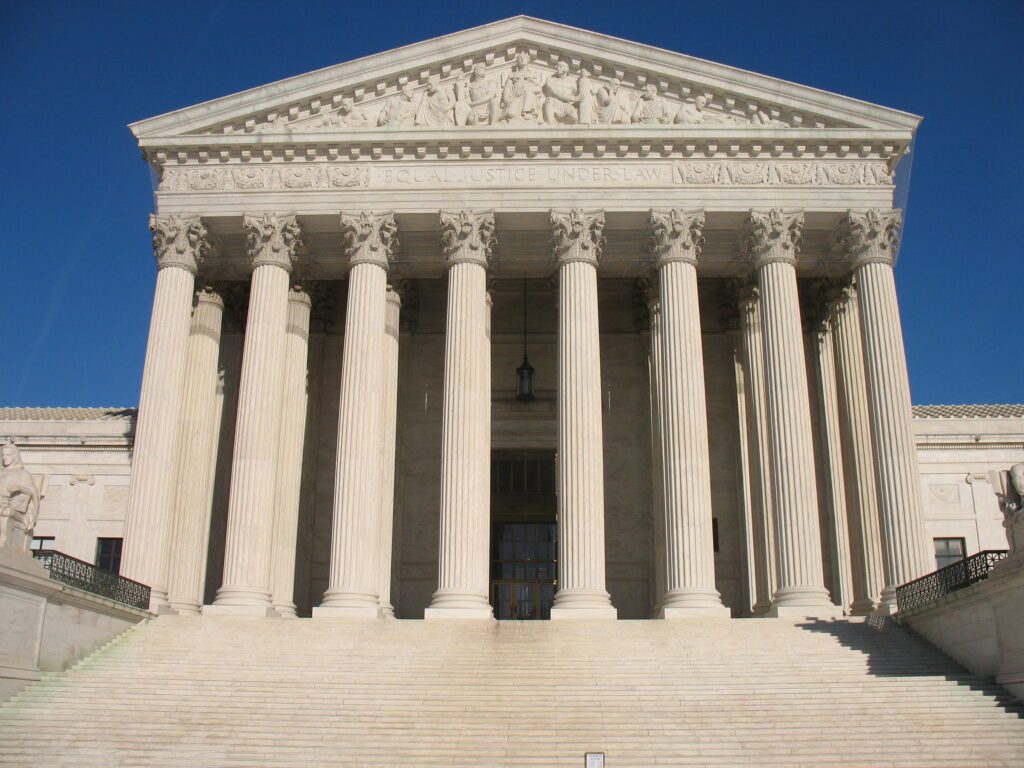Chevron Deference

Chevron decision supreme court – Chevron Deference is a legal doctrine that gives deference to the interpretation of a statute by the agency responsible for administering it. The doctrine is based on the principle that agencies have expertise in their respective fields and are therefore better equipped to interpret the statutes they administer than courts are.
Chevron Deference has been applied in numerous cases. One example is the case of Chevron U.S.A., Inc. v. Natural Resources Defense Council, Inc. (1984). In that case, the Supreme Court held that the Environmental Protection Agency’s (EPA) interpretation of the Clean Air Act was entitled to deference. The Court reasoned that the EPA had expertise in environmental matters and was therefore better equipped to interpret the statute than the courts were.
The Chevron decision of the Supreme Court, which set a precedent for judicial deference to agency interpretations of statutes, has had a lasting impact on administrative law. However, the application of the Chevron doctrine has been criticized for potentially allowing agencies to wield excessive power.
In contrast, the tartan pattern , with its distinct and intricate crisscross design, evokes a sense of tradition and cultural heritage. Despite the contrasting contexts, both the Chevron decision and the tartan pattern underscore the importance of understanding the nuances of legal frameworks and cultural symbols in shaping society.
Chevron Deference has been criticized on the grounds that it gives too much power to agencies and undermines the separation of powers. Critics argue that agencies are not always experts in their fields and that they may be influenced by political considerations when interpreting statutes. Additionally, critics argue that Chevron Deference allows agencies to avoid judicial review of their actions.
The Chevron decision by the Supreme Court has been a topic of debate for years, and it has recently been brought back into the spotlight by Thomas Massie. Massie has been a vocal critic of the Chevron decision, arguing that it gives too much power to unelected bureaucrats.
The Chevron decision, which was issued in 1984, established a two-step test for courts to use when reviewing agency interpretations of statutes. Under the Chevron test, courts must first determine whether the statute is ambiguous. If the statute is ambiguous, courts must then defer to the agency’s interpretation of the statute.
Despite the criticisms, Chevron Deference remains an important doctrine in administrative law. It gives agencies the flexibility to interpret statutes in a way that is consistent with their expertise and it promotes consistency in the interpretation of statutes.
The Chevron decision, a landmark Supreme Court ruling, has been overturned, as scotus overturns chevron. This ruling has significant implications for the Chevron doctrine, which gave deference to agency interpretations of ambiguous statutes. The Supreme Court’s decision marks a shift in the balance of power between the judiciary and administrative agencies, potentially impacting the implementation and enforcement of various laws.
Application of Chevron Deference
Chevron Deference is applied in two steps:
- The court first determines whether the statute is ambiguous.
- If the statute is ambiguous, the court defers to the agency’s interpretation of the statute.
In order for a statute to be ambiguous, it must be capable of being interpreted in more than one way. If the statute is clear and unambiguous, the court will not defer to the agency’s interpretation.
The Chevron decision of the Supreme Court has been a subject of much debate, with some arguing that it gives too much deference to agencies. Representative Thomas Massie has been a vocal critic of the Chevron doctrine, arguing that it allows agencies to overreach their authority.
He has introduced legislation that would overturn Chevron, and his efforts have gained support from some of his colleagues.
Chevron Deference is a powerful doctrine that gives agencies a great deal of discretion in interpreting statutes. However, it is important to remember that Chevron Deference is not absolute. Courts will not defer to an agency’s interpretation of a statute if the interpretation is unreasonable or inconsistent with the statute’s plain meaning.
The Chevron decision of the Supreme Court, which established the deference given to agency interpretations of law, has been a subject of debate for decades. One of the most vocal critics of Chevron is Representative Thomas Massie , who has introduced legislation to overturn the doctrine.
Massie argues that Chevron gives too much power to unelected bureaucrats and undermines the separation of powers. Despite these criticisms, Chevron remains the law of the land, and it is likely to continue to be a source of controversy for years to come.
Criticisms of Chevron Deference
Chevron Deference has been criticized on a number of grounds, including:
- It gives too much power to agencies.
- It undermines the separation of powers.
- It allows agencies to avoid judicial review of their actions.
- It is based on the assumption that agencies are experts in their fields, which is not always true.
- It can lead to inconsistent interpretations of statutes.
Despite these criticisms, Chevron Deference remains an important doctrine in administrative law. It gives agencies the flexibility to interpret statutes in a way that is consistent with their expertise and it promotes consistency in the interpretation of statutes.
Impact on the Separation of Powers, Chevron decision supreme court
Chevron Deference has a significant impact on the separation of powers. By giving deference to agencies’ interpretations of statutes, courts are essentially ceding some of their power to interpret the law. This can lead to a situation where agencies have more power than the courts, which can undermine the separation of powers.
However, it is important to note that Chevron Deference is not absolute. Courts will not defer to an agency’s interpretation of a statute if the interpretation is unreasonable or inconsistent with the statute’s plain meaning. This means that courts still have a role to play in interpreting statutes and in ensuring that agencies do not abuse their power.
Supreme Court Rulings on Chevron Deference

The Supreme Court has issued several key rulings on Chevron Deference, a doctrine that gives deference to an agency’s interpretation of a statute that it administers.
Chevron U.S.A., Inc. v. Natural Resources Defense Council, Inc.
In 1984, the Supreme Court ruled in Chevron U.S.A., Inc. v. Natural Resources Defense Council, Inc. that when a statute is ambiguous, a court should defer to an agency’s reasonable interpretation of that statute. The Court reasoned that agencies have expertise in the areas they regulate and that it is therefore appropriate to give deference to their interpretations of statutes.
The Chevron decision has been controversial, with some critics arguing that it gives too much power to agencies. However, the doctrine remains good law and continues to be applied by courts today.
Dissenting Opinions and Changes in the Court’s Approach
Over time, the Supreme Court has issued some dissenting opinions and has made some changes to its approach to Chevron Deference. In recent years, the Court has been more willing to overturn agency interpretations of statutes that it believes are unreasonable.
Despite these changes, Chevron Deference remains an important doctrine in administrative law. It gives agencies a significant amount of leeway in interpreting the statutes they administer, and it makes it difficult for courts to overturn those interpretations.
Impact of Chevron Deference on Environmental Regulation: Chevron Decision Supreme Court

Chevron Deference has had a significant impact on environmental regulation, particularly in the context of the Clean Air Act and the Clean Water Act. This deference has led to a more deferential approach by courts in reviewing agency interpretations of environmental statutes, which has in turn influenced the implementation and enforcement of these laws.
One of the most significant impacts of Chevron Deference on environmental regulation has been to give agencies more leeway in interpreting ambiguous statutory provisions. In Chevron U.S.A., Inc. v. Natural Resources Defense Council, Inc., the Supreme Court held that when a statute is ambiguous, courts must defer to the agency’s reasonable interpretation of the statute. This has allowed agencies to adopt interpretations that are more favorable to industry and less protective of the environment.
For example, in Massachusetts v. Environmental Protection Agency, the Supreme Court held that the Clean Air Act authorized the EPA to regulate greenhouse gases from motor vehicles. However, the Court also held that the EPA’s interpretation of the statute was not reasonable because it was not based on a “clear and unambiguous” statutory provision. This decision has made it more difficult for the EPA to regulate greenhouse gases and other pollutants under the Clean Air Act.
Chevron Deference has also had a significant impact on the enforcement of environmental laws. In GDF Realty Investments, Ltd. v. Norton, the Supreme Court held that the EPA could not bring an enforcement action against a landowner for violating the Clean Water Act without first proving that the landowner had “knowingly” violated the statute. This decision has made it more difficult for the EPA to enforce the Clean Water Act and other environmental laws.
The potential implications of Chevron Deference for future environmental policy are significant. If courts continue to defer to agencies’ interpretations of environmental statutes, it will be more difficult for environmental groups and other stakeholders to challenge agency actions that are harmful to the environment.